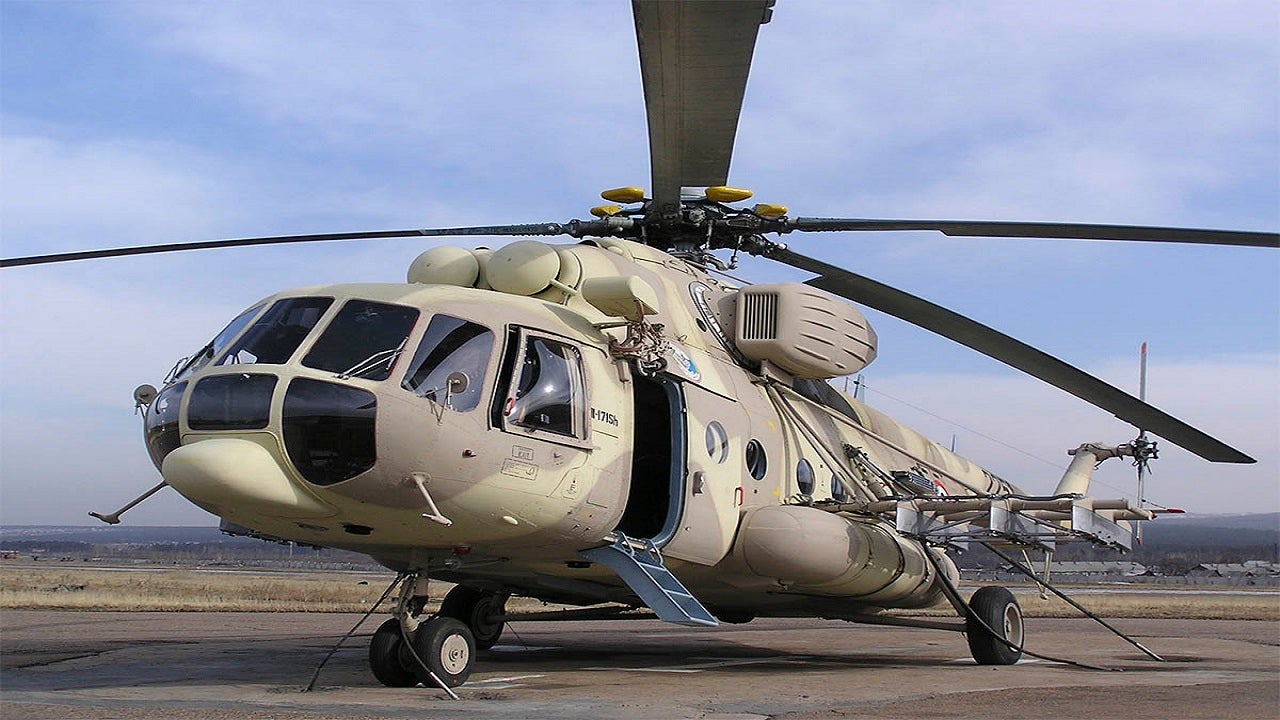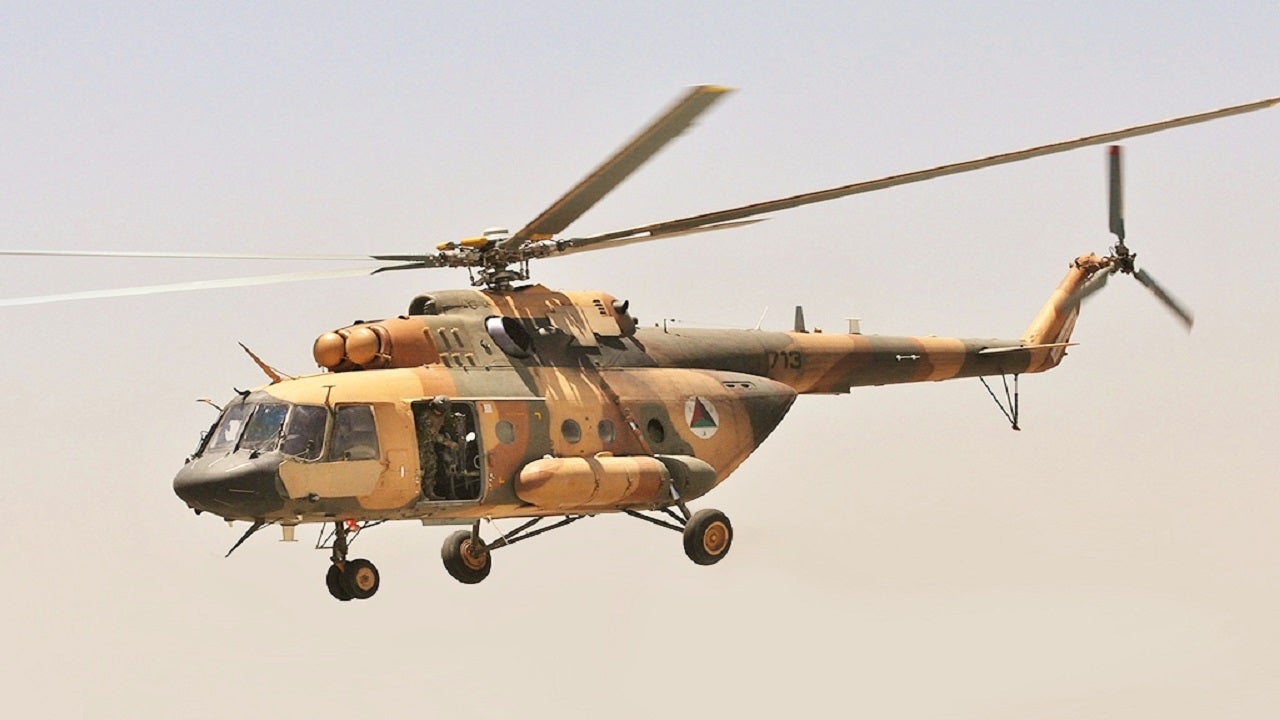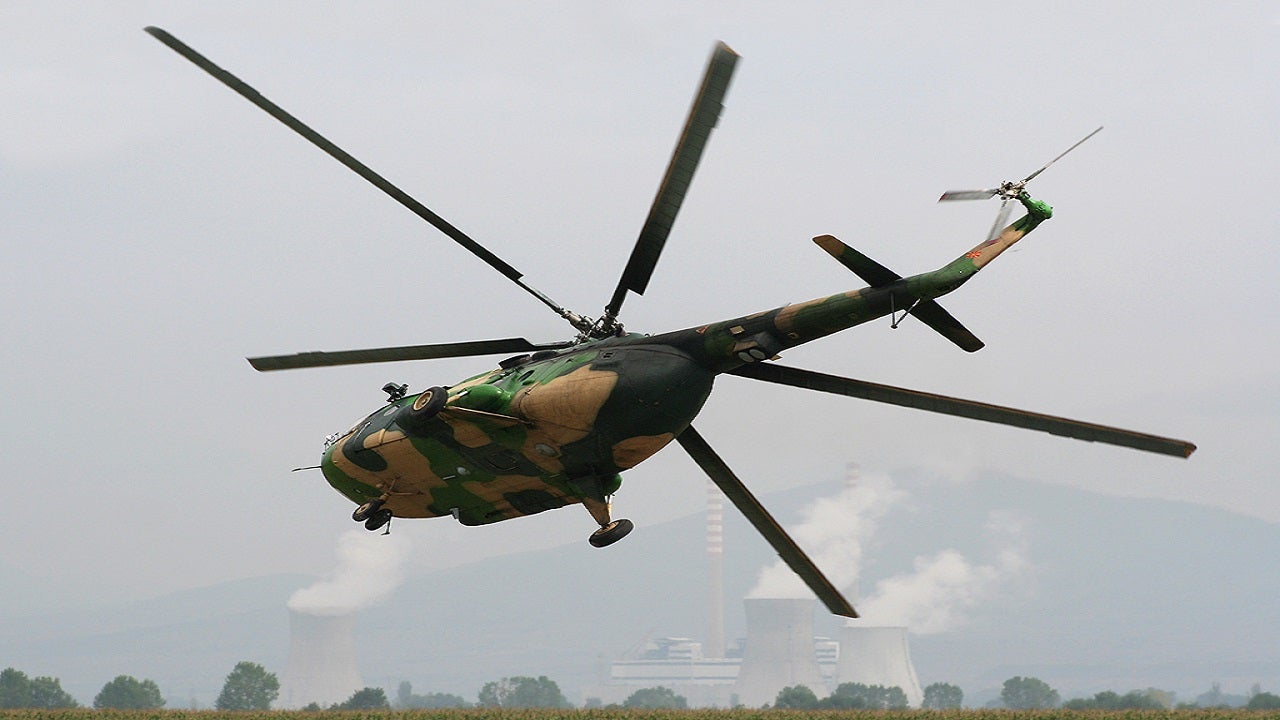The Mi-171Sh helicopter is a military transport variant of the Mi-171 helicopter developed by the Ulan-Ude Aviation Plant (UUAP), part of Russian Helicopters.
The military transport helicopter was introduced into the global market in 2002 by the Russian state-owned special exporter Rosoboronexport.
The Mi-171Sh can be deployed on a range of missions, including the airlifting of assault forces, transportation of cargoes, troop fire support, air-to-surface attack, escort of the military columns, medical evacuation, and combat search and rescue (CSAR) operations.
Mi-171Sh Storm, a modernised version of Mi-171Sh helicopter featuring increased armour was unveiled in August 2020.
Orders and deliveries of the Russian helicopter
The Mi-171Sh transport helicopters have been ordered by Russian allied partners, as well as Nato members. UUAP delivered 26 Mi-171Sh helicopters to Croatia and the Czech Republic between 2005 and 2008.
The Russian Ministry of Defence ordered the Mi-171Sh as part of the modernisation programme of the Russian Armed Forces in 2009. UUAP delivered the first batch of ten Mi-171AMTSh (Russian designation of Mi-171Sh) helicopters in December 2010, followed by the second batch in June 2011.
The Peruvian Ministry of Defence placed an order for six Mi-171Sh helicopters for the Peruvian Army and Air Force in 2010. Three helicopters were delivered in May 2011, with the remaining delivered by September of the same year. The country received four Mi-171Sh helicopters in December 2014 as part of a 24-unit order placed by the nation December 2013.
The Ghana Air Force placed an order with Rosoboronexport for six Mi-17Sh helicopters in September 2012 took delivery of the first four in January 2013.
Bangladesh ordered 11 Mi-171Sh helicopters in 2014 and 2015, which was followed by another order for five more helicopters in 2017.
Rosoboronexport signed a contract to supply two Mi-171Sh helicopters to the Burkina Faso Air Force in August 2017.
Mi-171Sh military transport helicopter design
The Mi-171Sh was specifically designed for operating in combat missions in local armed conflicts. The design incorporates a five-bladed main rotor, a tail rotor and non-retractable tricycle nose-wheel landing gear.
The glassed-in cockpit accommodates three crew and cabin houses up to 36 troops, or up to 12 casualties on stretchers. The helicopters are equipped with modern avionics and instrumental equipment, to operate in all weather conditions at any time of the day.
The armour protection provided over the crew cabin and vital units increases the combat survivability of the helicopter. The engine exhaust ducts are equipped with infrared suppression exhaust mixer boxes for a low infrared signature.
The helicopter has an IR-decoy dispensing system to counter an infrared homing surface-to-air missile or air-to-air missile. The fuel tank self-sealing covers and polyurethane foam protection avoid the possibility of fuel explosions and leakage in case of combat damage.
Weapons and missiles on the Russian helicopter
The Mi-171Sh is armed with a Shturm-V high-precision guided missile system. The missiles can destroy modern battle tanks protected by explosive reactive armour, fortified points and aerial targets.
The Shturm-V missile complex launches Ataka supersonic missiles equipped with a hollow-charge warhead for defeating armoured targets. The missile can destroy aerial targets with a fragmentation warhead and lightly armoured combat materiel by using a high-explosive warhead.
The Mi-171Sh is also provided with hardpoints to carry up to 80 S-8 unguided rockets and GSh-23L 23mm cannons, with an ammunition load of 500 rounds. Small arms, such as the 7.62mm PKT machine gun, PK machine gun and RPK light machine gun, are mounted in the nose and rear fuselage sections. The gun pivots provided at the doorway and near the windows allow the onboard troops to operate these weapons during flight.
Mi-171Sh engines and transportation capabilities
The multifunctional cargo cabin has a length of 5.34m, width of 2.34m and a height of 1.8m. It provides enough internal space to carry 4,000kg of payload.
The helicopter can transport up to 4,000kg of cargo externally under sling. The main cabin features internal winch facilities, while the floor has tie-down rings for cargo transport. Either side of the fuselage is provided with a pod for an external fuel tank.
The Mi-171Sh is powered by two Klimov TV3-117VM turboshaft engines mounted on top of the fuselage. Each engine is rated at 1,641kW. The helicopter can be optionally fitted with two VK-2500 turboshaft engines, each rated at 2,700hp.
The Mi-171Sh can fly at a maximum altitude of 6,000m and has a maximum take-off weight of 13,000kg. The maximum speed of the helicopter is 250km/h and its range (without auxiliary fuel tanks) is 580km.






